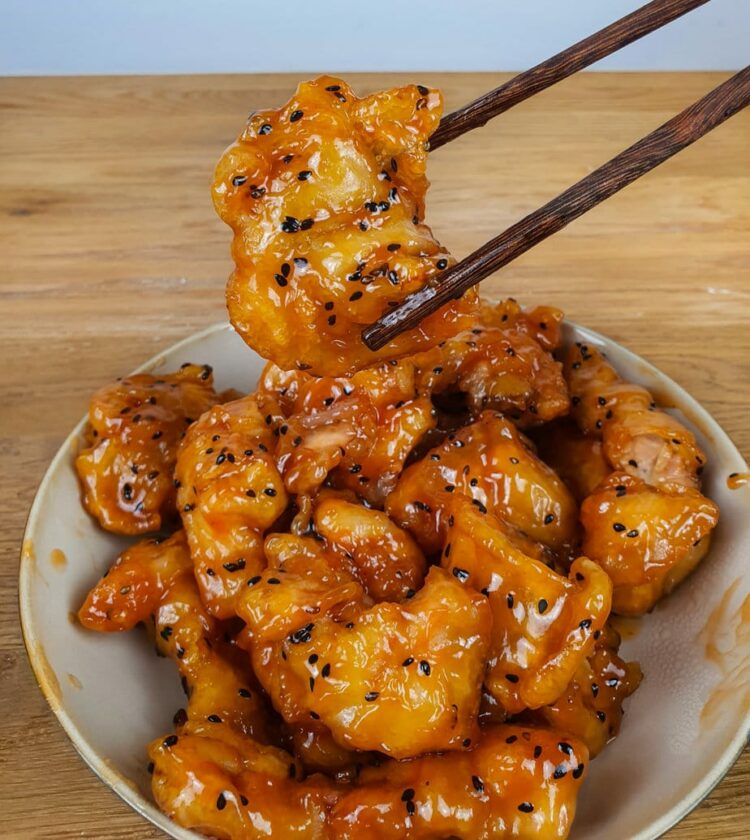Sweet and sour pork is a classic, whether for appetizers or as a meal accompanied by good Cantonese rice: I never get tired of it and I don’t know if I could ever break this addiction.
In short, in addition to this recipe, you have a recipe for homemade sweet and sour sauce that will change your life because it’s so simple… Not a week goes by without me making a small separate jar.
If you’re a fan of Chinese cuisine, this recipe is made for you! Dip tempura shrimp, nachos, and other fried foods: the possibilities are endless!
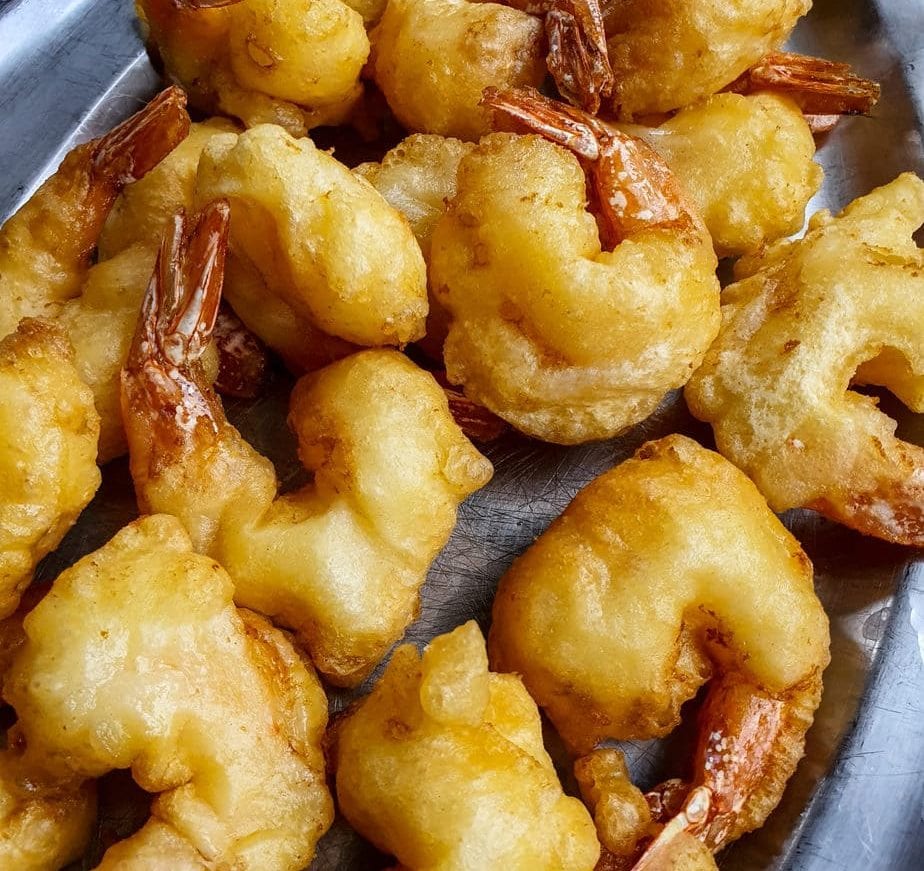
To make it more visually impressive, I added black sesame seeds, but it’s really not essential. I forgive you if you don’t want to take the time.
Tips for sweet and sour pork
I don’t recommend using pork belly/bacon for this recipe. Indeed, this cut is too fatty, it’s better to use leaner cuts (or, if you’re privileged, Iberian pork secreto)
Be careful not to fry too many pieces of pork at once to avoid the pieces sticking together.
I usually fry about 6 to 8 pieces at a time if I’m using my small Asian fryer.
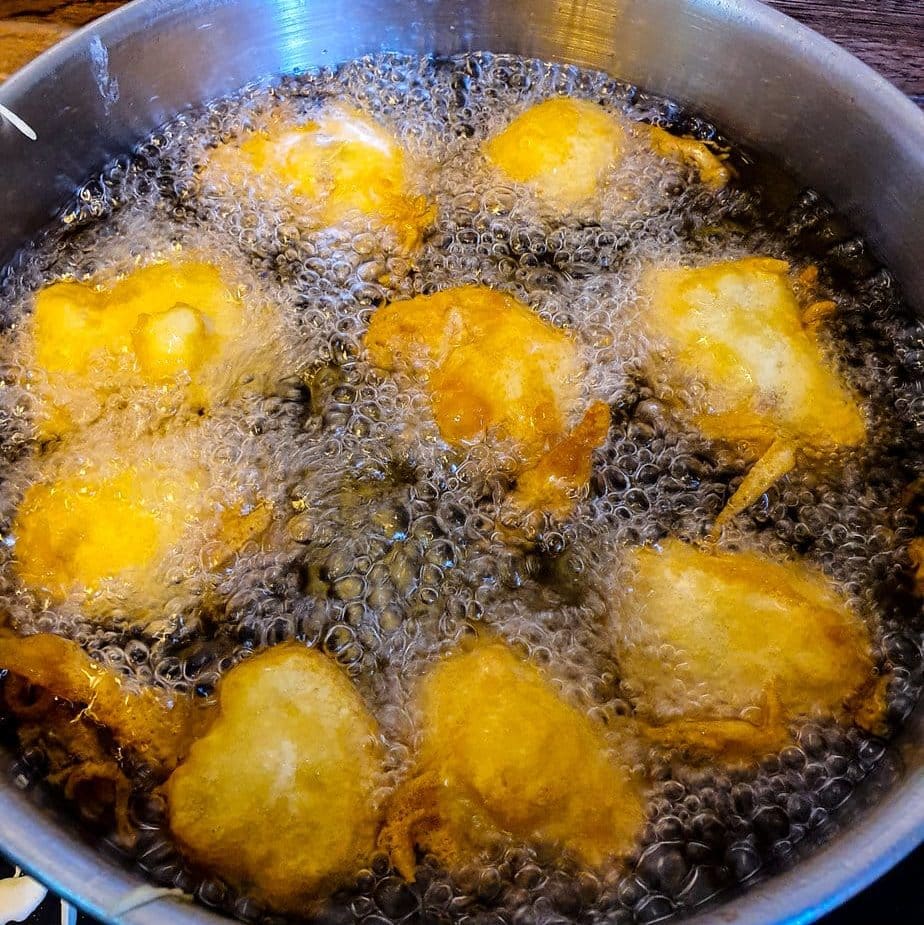
Use a cooking thermometer to ensure your oil is at the right temperature. If the oil is too hot, the outside of the pork may burn before the inside is cooked.
If the oil is too cold, the pork will absorb more oil and be heavy and greasy (fat is life, but in moderation).
If you want to have leftovers for another day, plan to keep some of the pork fritters separate from the sauce.
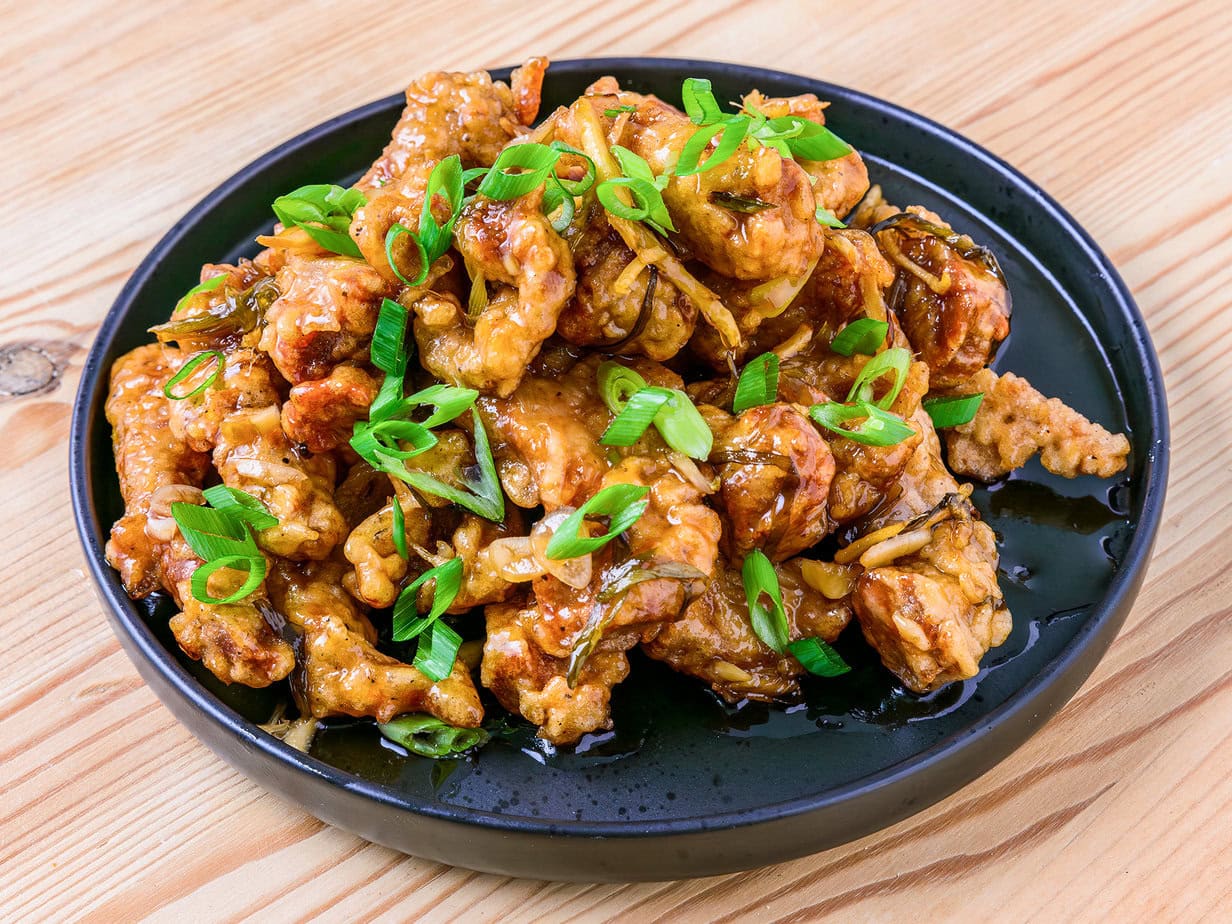
This way, you can reheat the pork with the second frying and the sauce separately, and the dish will retain its flavor and texture.
The ideal is even to freeze the fritter after the first frying and then ‘reheat’ it by passing it through the fryer. Like frozen fries in the end.
The sauce is the same concept for all sauces. Chinese white sauce, sweet and sour sauce, sweet and salty, General Tso’s chicken sauce, garlic and honey chicken sauce, … all have one ingredient in common: cornstarch, it’s the secret of beautiful sticky Asian sauces.
The only downside of a sticky sauce like the one for sweet and sour pork is that the consistency doesn’t last.
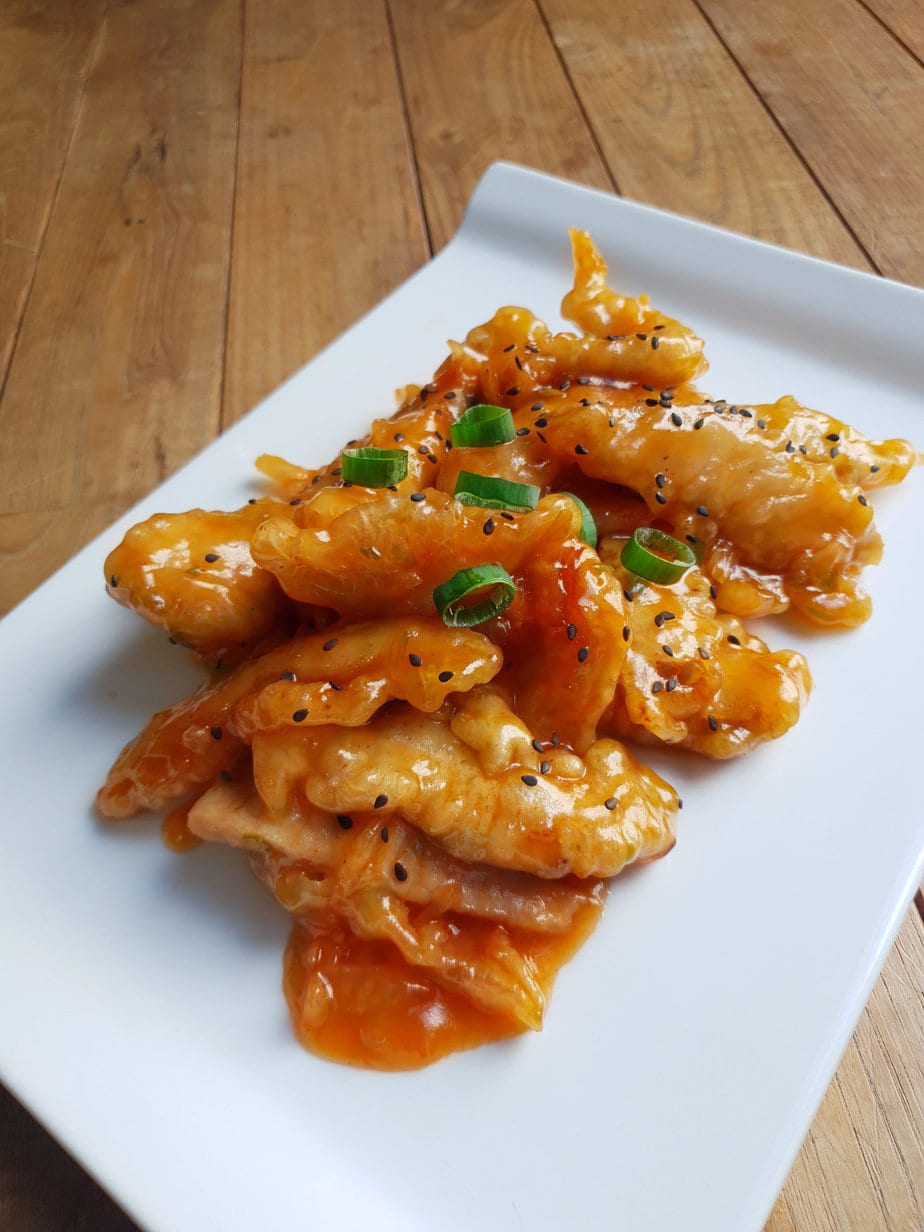
I’m sure you’ve already ordered Chinese food and found pieces of meat in a very watery sauce (in the bad sense of the term) the next day.
This is because cornstarch can only maintain its nice texture for about an hour at most. So the next day, your sweet and sour pork may have decreased in quality. That’s why I recommend preparing sweet and sour pork on the spot
If you liked this recipe, I recommend my sweet and sour chicken
The ingredients for sweet and sour pork
Shaoxing wine: a classic in Chinese cuisine, it gives a very typical taste to dishes. Learn all about it here
Rice vinegar: Also essential for all Asian cuisine. Come read my full article on the subject.
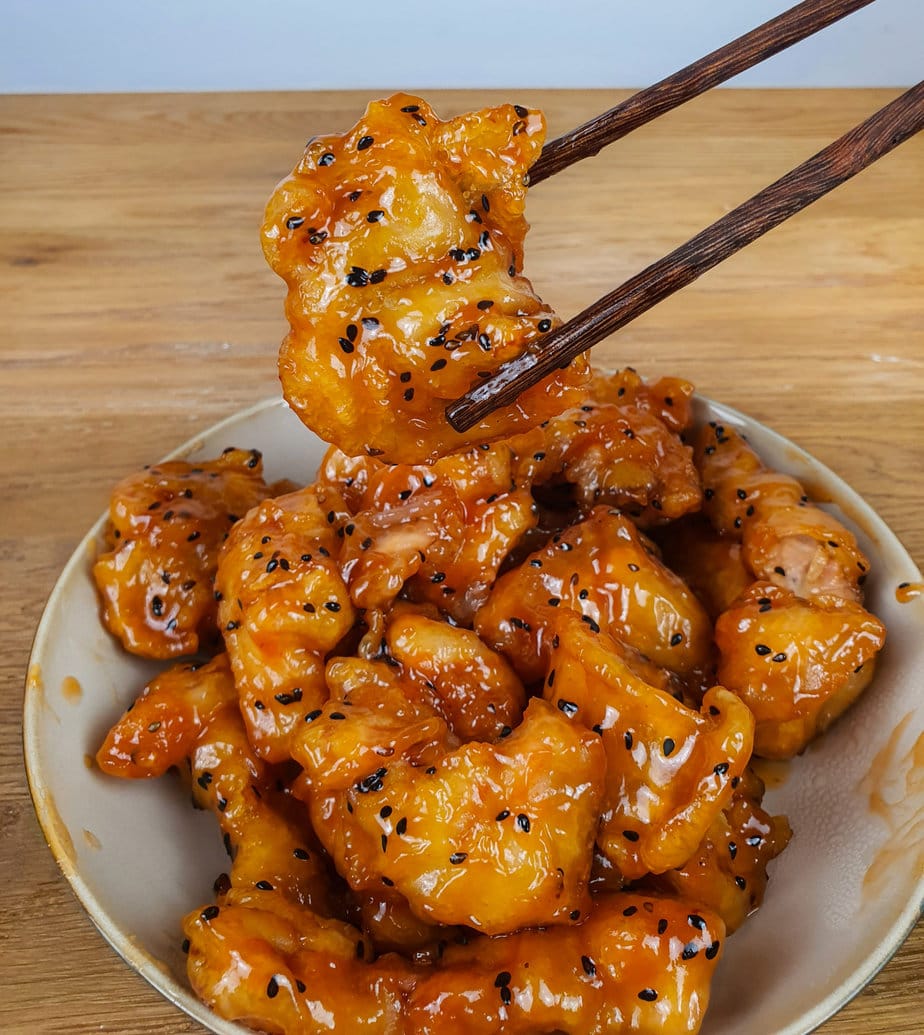
Equipment
- 1 Wok
Ingredients
MARINADE
- 200 g of pork tenderloin
- 0.5 teaspoon of white pepper
- 1 teaspoon of salt
- 1 tablespoon of Shaoxing wine
- 1 tsp. of sugar
- 4 pieces of crushed ginger
FRYING
- 1 portion my universal breadcrumbs
SAUCE
- 4 tablespoons ketchup
- 4 tablespoons of sugar
- 2 teaspoons rice vinegar
- 1 pinch salt
- 120 ml water
- 0.5 tablespoon cornstarch
Instructions
- Marinate the pork for 10 minutes, meanwhile prepare the breadcrumbs and mix the sauce
- Dip the pork pieces in the breadcrumbs then in oil at about 160 degrees (a wooden spoon makes small bubbles when you put it in). Fry until barely golden.
- Once all the pieces are fried, fry them a second time until golden. Set aside.
- In a wok, over medium-high heat, sauté the spring onions and ginger for 1 minute in a little oil. Then add the well-mixed sauce and stir until nicely thickened.
- Add the pork and gently mix to coat
